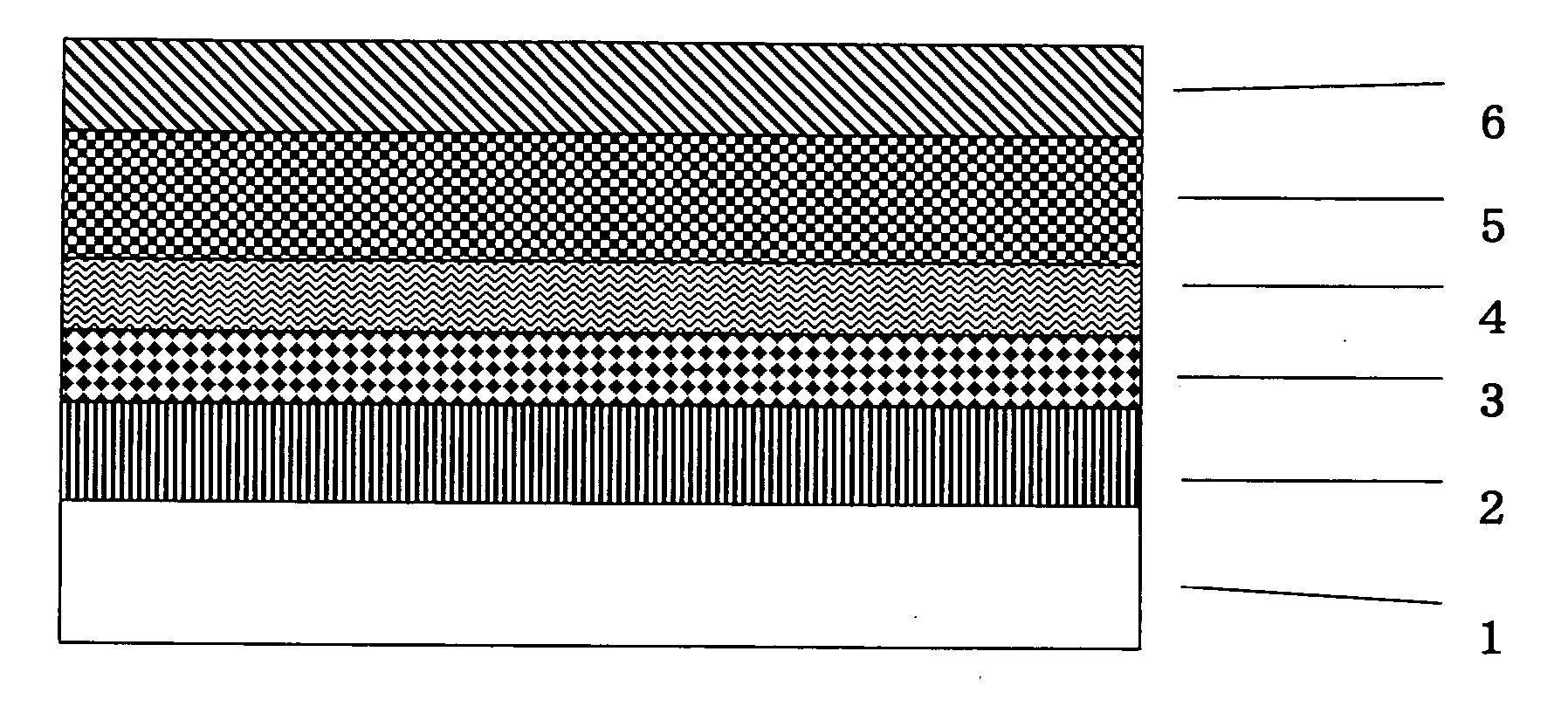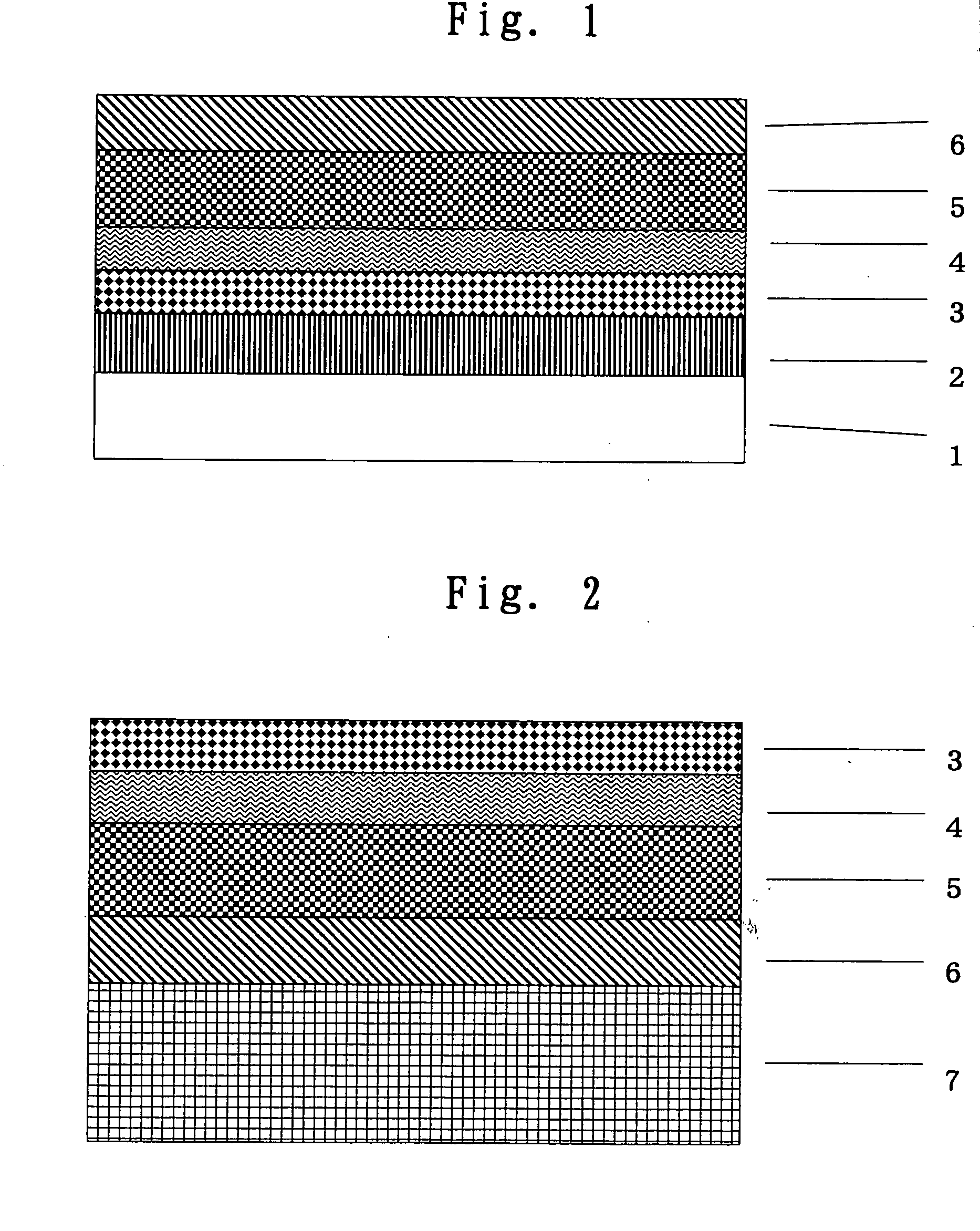Antireflection film
a technology of anti-reflection film and anti-abrasion resistance, which is applied in the direction of roads, instruments, traffic signals, etc., can solve the problems of low productivity, cumbersome production process, and disadvantageous high reflectance of anti-reflection film, and achieve excellent anti-reflection performance and excellent mechanical strength and abrasion resistance.
- Summary
- Abstract
- Description
- Claims
- Application Information
AI Technical Summary
Benefits of technology
Problems solved by technology
Method used
Image
Examples
synthesis example 1
[0185] 89.1 g of an aqueous dispersion of moniliform silica strings which each comprise primary silica particles having an average particle diameter of about 12 nm and which have an average length of about 100 nm (trade name: Snowtex® OUP; manufactured and sold by Nissan Chemical Industries, Ltd., Japan) (solid silica content: 15.5% by weight), 68.1 g of a silica sol containing spherical silica particles having an average particle diameter of about 10 nm (trade name: Snowtex® OS; manufactured and sold by Nissan Chemical Industries, Ltd., Japan) (solid silica content: 20.3% by weight)) and 75.7 g of ethanol were mixed together at room temperature, and 17.1 g of 3-methacryloxypropyltrimethoxysilane (trade name: Sila-Ace; manufactured and sold by Chisso Corporation, Japan) was added thereto. The resultant mixture was stirred at 25° C. for 4 hours to effect a reaction, thereby obtaining a reaction mixture. On the other hand, 2 g of Irgacure® 369 (manufactured and sold by Ciba Specialty ...
synthesis example 2
[0186] 92.9 g of a dispersion of tin-containing indium oxide particles (trade name: ELCOM V-2506; manufactured and sold by Catalysts & Chemicals Industries Co., Ltd., Japan) (solids content: 20.5% by weight) and 125.3 g of a dispersion of zinc oxide particles (trade name: ZNAP15WT %-G0; manufactured and sold by C. I. KASEI CO., LTD., Japan) were mixed together to obtain a mixture. On the other hand, 304.2 g of isopropyl alcohol, 33.8 g of ethylene glycol monobutyl ether and 23.9 g of water were mixed together to obtain a mixed solvent. Further, 9.9 g of an acrylic ultraviolet-curable resin (trade name: SANRAD RC-600; manufactured and sold by Sanyo Chemical Industries, Ltd., Japan) and 9.9 g of methyl ethyl ketone were mixed together to obtain a solution. Then, to the above-obtained mixture of a dispersion of tin-containing indium oxide particles and a dispersion of zinc oxide particles were added the above-obtained mixed solvent and the above-obtained solution in this order, and the...
example 1
[0187] The transfer foil C shown in FIG. 1 was produced as follows.
[0188] A surface of a biaxially oriented polyethylene terephthalate film (provisional substrate) 1 (thickness: 50 μm) was coated with a 50% by weight methyl ethyl ketone solution of an acrylic UV curable resin (solids content: 100% by weight) (SANRAD (tradename) RC-600; manufactured and sold by Sanyo Chemical Industries, Ltd., Japan) using a bar coater (equipped with #7 rod; manufactured and sold by R. D. Specialties, Inc., U.S.A.). Then, the resultant coating on the polyethylene terephthalate film was cured by irradiating ultraviolet rays (integrated optical power: 250 mJ / cm2) using a UV curing machine (LC-6B type; manufactured and sold by Fusion UV Systems Japan K.K., Japan) under conditions wherein the intensity is 180 W, the rate of the conveyer is 12 m / minute and the distance from the light source is 53 mm. This UV irradiation operation was performed three times, thereby forming release layer 2 on the provision...
PUM
| Property | Measurement | Unit |
|---|---|---|
| Ra | aaaaa | aaaaa |
| reflectance | aaaaa | aaaaa |
| reflectance | aaaaa | aaaaa |
Abstract
Description
Claims
Application Information
 Login to View More
Login to View More - R&D
- Intellectual Property
- Life Sciences
- Materials
- Tech Scout
- Unparalleled Data Quality
- Higher Quality Content
- 60% Fewer Hallucinations
Browse by: Latest US Patents, China's latest patents, Technical Efficacy Thesaurus, Application Domain, Technology Topic, Popular Technical Reports.
© 2025 PatSnap. All rights reserved.Legal|Privacy policy|Modern Slavery Act Transparency Statement|Sitemap|About US| Contact US: help@patsnap.com



